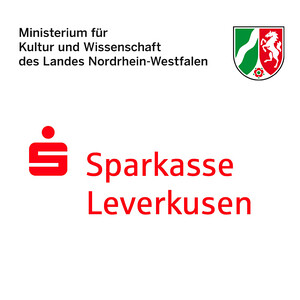The Traces
September 24, 2017–January 7, 2018
Gustav-Heinemann-Strasse 80
D-51377 Leverkusen
Germany
Hours: Tuesday–Sunday 11am–5pm
T +49 214 855560
F +49 214 8555644
museum-morsbroich@kulturstadtlev.de
In the exhibition Mirosław Bałka. Die Spuren/The Traces the artist has interrelated a selection of sculptures, sound-specific and site-specific works which are limited to minimal gestures and reduced artistic elements and that revolve around the idea of emptiness. This emptiness created by means of reserved enactments, minimal interventions and reduced gestures makes space for the relationship between the separate works, mutually charged by their interaction, and thus opens up the interpretative impetus for the viewer’s perception that is driven not only by seeing, but also by moving around, feeling and hearing.
Arguing metaphorically, but never narratively, Bałka’s works transform personal experiences or actual history into fundamental, existential, human questions of life and death. The different-coloured cotton threads of Kategorien, Tragbar (2015) that are caused to move when visitors move around the room, for example, make reference to the colour coding of inmates of Nazi concentration camps—pink for homosexuals, green for criminals, red for political prisoners, black for Roma and “asocial elements,” purple for Jehova’s Witnesses.
The point of reference of many of Bałka’s works is the body and the corporeality of human existence. Whereas in his earlier works the body featured as an image, in the works since the 1990s it seems to be present through its absence. The traces of the material or of gestures tell of its presence and absence alike. This paradox describes the consciously enacted trace visualised by materials or forms commonly associated with the body. Materials such as ash, hair or salt—as the salt of tears or sweat—and minimalist forms reminiscent of beds or coffins evoke an image of the body without depicting is as an object. At the same time, however, the traces also connote a certain notion of the corporeal. The horizontal body, for example, is associated with the image of mortality and death. Materials such as ash or hair also allude to this complex of themes.
The act of showing the traces, their visibility in the artist’s works and the space of association that they pan out form the key for what is a fascinating and challenging philosophical reading of the works. The emphasis on a syntax of minimalist vocabulary of form thus goes hand in hand with the idea of abstraction that is also reflected in the titles of Bałka’s works. In almost all cases, dimensions—related to his body—become titles.
Mirosław Bałka (*1958 in Warsaw, Poland) is one of the most internationally acclaimed contemporary Polish artists. His work, that he has been developing consistently since the 1980s, explores themes of human existence and incorporates a range of different media. In addition to abstract and figurative sculptures, he has also made short video films, sound works and site-specific works. His artistic work has always been accompanied by drawings of an often private nature that reveal the thought processes underlying the work.
The curator of the exhibition is Stefanie Kreuzer.
The exhibition opening will be on Sunday, September 24 at noon in the Spiegelsaal at Museum Morsbroich.

